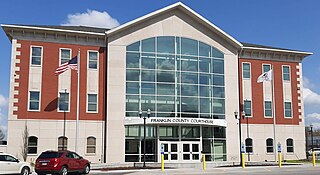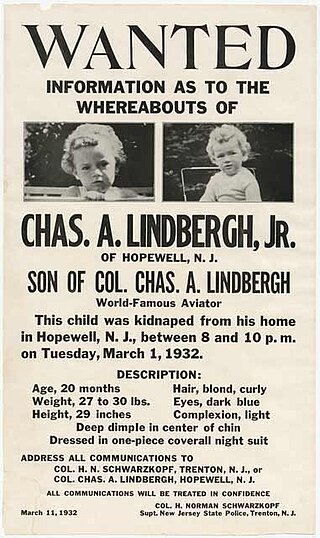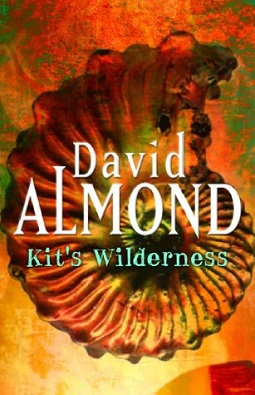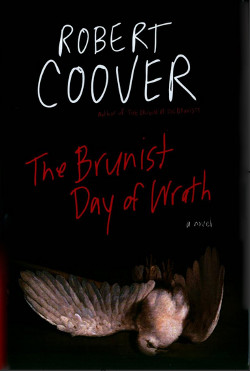
Apocalyptic and post-apocalyptic fiction is a subgenre of science fiction in which the Earth's civilization is collapsing or has collapsed. The apocalypse event may be climatic, such as runaway climate change; astronomical, such as an impact event; destructive, such as nuclear holocaust or resource depletion; medical, such as a pandemic, whether natural or human-caused; end time, such as the Last Judgment, Second Coming or Ragnarök; or any other scenario in which the outcome is apocalyptic, such as a zombie apocalypse, cybernetic revolt, technological singularity, dysgenics or alien invasion.

Franklin County is a county in Southern Illinois. At the 2020 census, it had a population of 37,804. The largest city is West Frankfort and the county seat is Benton. This area of Southern Illinois is known locally as "Little Egypt".

Christopher is a city in Franklin County, Illinois, United States. The population was 2,697 at the time of the 2020 census.

West Frankfort is a city in Franklin County, Illinois. The population was 7,275 at the 2020 census. The city is well known for its rich history of coal. The city is part of the Metro Lakeland area.

The United Mine Workers of America is a North American labor union best known for representing coal miners. Today, the Union also represents health care workers, truck drivers, manufacturing workers and public employees in the United States and Canada. Although its main focus has always been on workers and their rights, the UMW of today also advocates for better roads, schools, and universal health care. By 2014, coal mining had largely shifted to open pit mines in Wyoming, and there were only 60,000 active coal miners. The UMW was left with 35,000 members, of whom 20,000 were coal miners, chiefly in underground mines in Kentucky and West Virginia. However it was responsible for pensions and medical benefits for 40,000 retired miners, and for 50,000 spouses and dependents.

On March 1, 1932, Charles Augustus Lindbergh Jr., the 20-month-old son of colonel Charles Lindbergh and his wife Anne Morrow Lindbergh, was abducted from his crib in the upper floor of the Lindberghs' home, Highfields, in East Amwell, New Jersey, United States. On May 12, the child's corpse was discovered by a truck driver by the side of a nearby road.

Robert Lowell Coover is an American novelist, short story writer, and T. B. Stowell Professor Emeritus in Literary Arts at Brown University. He is generally considered a writer of fabulation and metafiction.

Springhill mining disaster may refer to any of three deadly Canadian mining disasters that occurred in 1891, 1956, and 1958 in different mines within the Springhill coalfield, near the town of Springhill in Cumberland County, Nova Scotia. In the 1891 accident, 125 died; in 1956, 39 were killed; and in 1958, 75 miners were killed.

The Sago Mine disaster was a coal mine explosion on January 2, 2006, at the Sago Mine in Sago, West Virginia, United States, near the Upshur County seat of Buckhannon. The blast and collapse trapped 13 miners for nearly two days; only one survived. It was the worst mining disaster in the United States since the Jim Walter Resources Mine disaster in Alabama on September 23, 2001, and the worst disaster in West Virginia since the 1968 Farmington Mine disaster. It was exceeded four years later by the Upper Big Branch Mine disaster, also a coal mine explosion in West Virginia, which killed 29 miners in April 2010.
On March 25, 1947, the Centralia No. 5 coal mine exploded near the town of Centralia, Illinois, killing 111 people. The Mine Safety and Health Administration of the United States Department of Labor reported the explosion was caused when an underburdened shot or blown-out shot ignited coal dust. The US Department of Labor lists the disaster as the second worst US mining disaster since 1940 with a total of 111 men dead.

Cardiff is a ghost town in Livingston County, Illinois, United States. Founded as a coal mining town in 1899, it boomed in its first few years. The closure of the mine in 1912 soon led to the community's demise. It is located in Round Grove Township, between the villages of Campus and Reddick.

Franklin was a coal mining town located in east King County, Washington, near the current so-called Hanging Gardens on the Green River, about 1 mile (1.6 km) east of Black Diamond.

Kit's Wilderness is a children's novel by David Almond, published by Hodder Children's Books in 1999. It is set in a fictional English town in the northeast of the country and was based on the former coal-mining towns the author knew as a child growing up in Tyne and Wear. It was silver runner-up for the Smarties Prize in ages category 9–11 years, highly commended for the Carnegie Medal, and shortlisted for the Guardian Prize.

The Cookeville Railroad Depot is a railroad depot in Cookeville, in the U.S. state of Tennessee. Built by the Tennessee Central Railway in 1909, the depot served Cookeville until the 1950s when passenger train service to the city was phased out. The depot was placed on the National Register of Historic Places in 1985 and is home to the Cookeville Depot Museum.

Wilder is an unincorporated community in Fentress County, Tennessee, United States. The community is in the Cumberland Mountains near Cookeville, Tennessee.
The Pana riot, or Pana massacre, was a coal mining labor conflict and also a racial conflict that occurred on April 10, 1899, in Pana, Illinois, and resulted in the deaths of seven people. It was one of many similar labor conflicts in the coal mining regions of Illinois that occurred in 1898 and 1899.
Scotts Run is a geographical division of the Cass District in Monongalia County, West Virginia, United States. Currently, it encompasses thirteen small, unincorporated communities. Located a few miles from Morgantown, this area's predominant industry in the early twentieth century was coal mining and production. Scotts Run became well known nationally during the years of the Great Depression, when photographers and the relief efforts of First Lady Eleanor Roosevelt publicized the impoverished conditions faced by the community. Since the decline in the coal industry in the area, Scotts Run's population has rapidly decreased. However, the current community is active in revitalization efforts to promote new businesses and heritage tourism.

The Brunist Day of Wrath is Robert Coover's tenth novel. It is a sequel to The Origin of the Brunists, which told the story of Giovanni Bruno, the lone survivor of a mine disaster that killed 97 of his co-workers, and the first several months of the apocalyptic cult that formed around him, ending in their disastrous scattering. The Brunist Day of Wrath is set five years later, as the cult returns to West Condon.

Harriet Bates was a 19th-century American author of poetry and novels. Her pen name, Eleanor Putnam, had been the maiden name of her great-grandmother.

Robert Kirkman's The Walking Dead: Invasion is a post-apocalyptic horror novel written by Jay Bonansinga and released October 6, 2015. The novel is a spin-off of The Walking Dead comic book series and continues to explore the story the character Lilly Caul. Invasion is the second book in a second four-part series of novels.

















